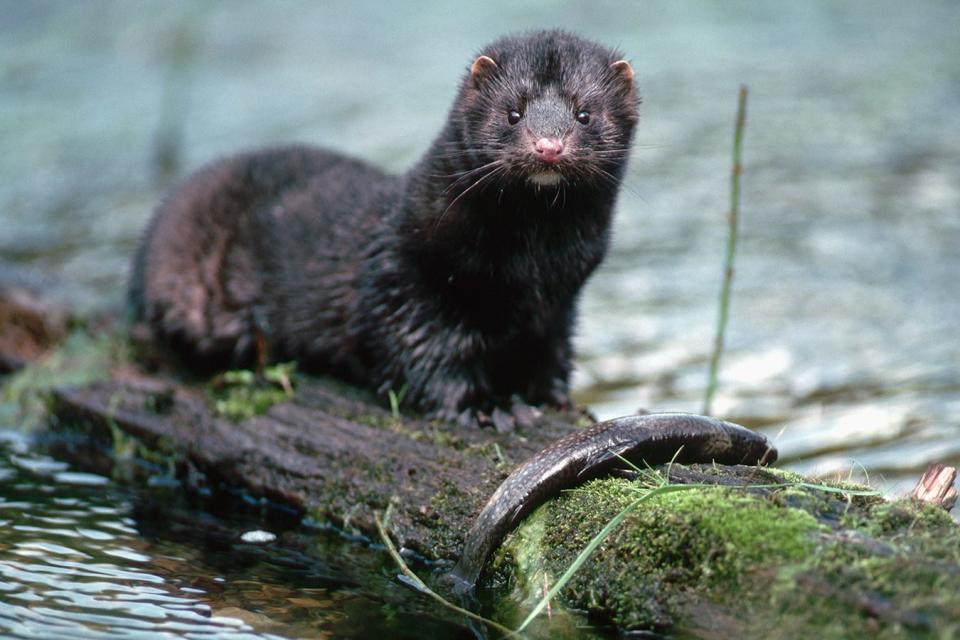Mink furs popular in the 1960s have lost their alure
- Oops!Something went wrong.Please try again later.
- Oops!Something went wrong.Please try again later.
- Oops!Something went wrong.Please try again later.
- Oops!Something went wrong.Please try again later.
- Oops!Something went wrong.Please try again later.
- Oops!Something went wrong.Please try again later.
- Oops!Something went wrong.Please try again later.
- Oops!Something went wrong.Please try again later.
- Oops!Something went wrong.Please try again later.
- Oops!Something went wrong.Please try again later.
- Oops!Something went wrong.Please try again later.
- Oops!Something went wrong.Please try again later.

What becomes a Legend most ?
Barbara Streisand, Lauren Bacall, Bette Davis, Judy Garland, Joan Crawford, Lena Horne, Brigitte Bardot, Maria Callas, Carol Burnett, Carol Channing, Ethel Merman, Raquel Welch, Julie Andrews, Sophia Loren, Lucille Ball, Ann-Margret, Cher, Audrey Hepburn, Cindy Crawford, and Ray Charles…What do they have in common?
The year was 1968. During the first week of February, Viet Cong’s Tet Offensive killed 543 Americans. Martin Luther King was assassinated in Memphis on April 4 and Robert F. Kennedy in Los Angeles on June 6. At the end of August, Chicago Mayor Richard Daley’s riot police clashed with protesters outside the chaotic Democratic National Convention.
In October, Olympic Gold and Silver medalists Tommie Smith and John Carlos bowed their heads and raised a black-gloved fist during the playing of "The Star-Spangled Banner" at the summer games in Mexico City. And on Election Day in November, Richard Nixon beat Hubert Humphrey, with former Alabama Governor, segregationist George Wallace, capturing 13.5% of the popular vote and five southern states.
On Christmas Eve, astronauts Jim Lovell, Bill Anders and Frank Borman orbited the moon 10 times, with Lovell radioing back to NASA. “Houston, please be informed there is a Santa Claus.”
And also in 1968, Richard Avedon photographed 26-year-old Barbara Streisand in the first of what would become a remarkable decades-long, promotional campaign. She was wearing mink.

Mink fur campaign relied on celebrities wearing the product
A Blackglama mink.
A few months beforehand, the Great Lakes Mink Association (GLMA), breeders of a distinctive black-furred mink for the fur trade, hired a New York advertising firm to promote their product. Copywriter Jane Trahey suggested the name Blackglama, an ingenious amalgam of GLMA with the concept of glamour.
More: Thousands of minks released by vandals in Ohio
But dark fur doesn’t photograph well, so Trahey also conceived of the brilliant marketing strategy of linking the furs to instantly recognizable celebrities. Each year, one celebrity would be the featured model, someone so famous no name need be mentioned in the ad. Above the striking black-and-white photo was the slogan, “What becomes a Legend most?” Below, just the word, Blackglama.
After Streisand, some of the world’s most famous women (and a few men like Ray Charles) would model for the enormously successful Blackglama campaign.
But times change. In January 2023 California became the first state to ban the sale and manufacture of new animal fur products within its borders. Similar legislation is under consideration in New York, which is interesting; in 2017, the two states comprised 43% of all new fur sales in the country. The ban does not prohibit owning or wearing furs or the sale of used furs, and it does not apply to other animal products used for clothing such as leather or shearling.
Across much of the world the popularity of fur has been in decline, for both ethical concerns and shifting tastes in fashion. In Europe, annual mink production decreased from 45 million in 2014 to 12 million in 2021, and 19 countries, including France, Italy, Ireland, the Netherlands and the UK have banned fur farming.
Minks are common and territorial
Although most urban dwellers may never see one, American mink are surprisingly common. Last fall, Deb and I had come to the intersection of US 224 and Ohio 18 just outside of Tiffin. We had a green light, but traffic was stopped in all directions as a sleek, two-and-a-half-foot long mink, the color of a cup of dark roast coffee and as thick in body as my forearm, bounded diagonally across the intersection. It was about 9 a.m.
Despite that one sighting, minks are primarily active at night. They are semiaquatic, fiercely carnivorous mammals that feed on all manner of vertebrate prey, from frogs and fish to mice, shrews and muskrats. On several occasions I’ve walked across the ice of a frozen swamp to inspect a muskrat lodge, only to find a skull lying beside a neatly drilled hole through the reeds and cattails with which the rodent had built the lodge.
Minks are highly territorial animals, and adult males will commonly fight to the death on meeting. Their long and narrow territories can stretch for several miles along a river or marsh, although they typically spend most of their time within one or two core areas with good prey availability.
American minks (Neogale vison) and the distantly related European minks (Mustela lutreola) are both highly sensitive to SARS-CoV-2, the virus causing COVID, with 35-55% mortality reported in a study of farmed mink in Utah. In 2020 Denmark, formerly the world’s leading producer of farmed mink, slaughtered its entire population of 17 million mink to stop the spread of a mutated strain of the virus which had infected 12 humans.
The accidental and intentional (by animal rights activists) release of American minks from farms in Europe have been listed as one of a number of factors for the precipitous decline in European mink in recent years. American minks are larger, more aggressive and more flexible in habitat use than their European cousins.
Ken Baker is a retired professor of biology and environmental studies. If you have a natural history topic you would like Dr. Baker to consider for an upcoming column, please email your idea to fre-newsdesk@gannett.com.
This article originally appeared on Fremont News-Messenger: Baker: Mink furs popular in the 1960s have lost their alure

